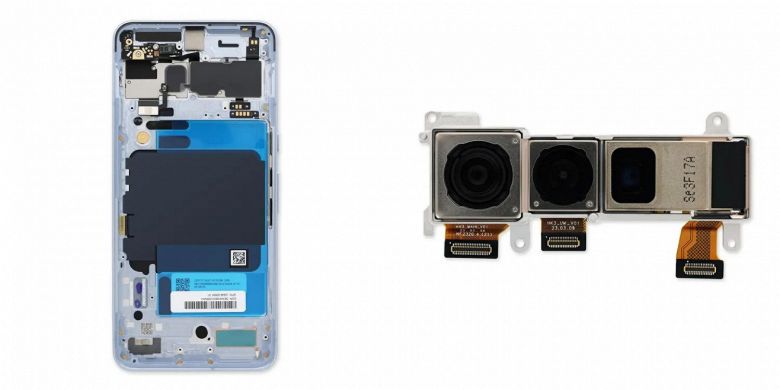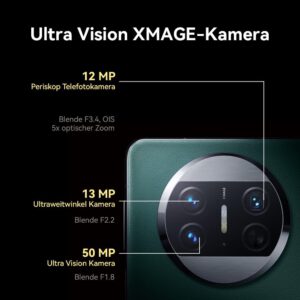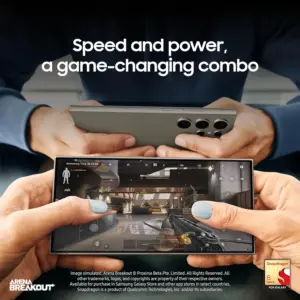The screen for the Pixel 8 Pro will cost $230, while the camera set will be priced at $200. Prices for parts of Google’s flagships have been revealed by iFixit.
Google, it should be recalled, has partnered with iFixit to provide parts for the new Pixel 8 and Pixel 8 Pro to all interested parties. Now the prices of these parts have been revealed.
The most expensive components for both models are the screens. For the Pixel 8, it’s $160, and for the Pixel 8 Pro, it’s $230. The camera of the older model isn’t far behind in price: $200. It seems that this is the price for the entire module. For the Pixel 8, the prices are listed separately: $143 for the main camera and $63 for the ultra-wide.
Additionally, the back cover is expensive: $143 for the Pixel 8 and $173 for the Pixel 8 Pro.

Google Pixel 8 Review: A Blend of Sophistication and Power
Introduction:
The Google Pixel emerges as the latest addition to Google’s esteemed Pixel smartphone lineup. Known for its integration of advanced software with top-tier hardware, the Pixel series has consistently set high standards. The Pixel 8 is no exception, offering a suite of enhancements that cater to both tech enthusiasts and everyday users. This review delves into the key features and performance aspects of the Pixel 8, providing insights into what makes it stand out in the competitive smartphone market.
Design and Build:
The Pixel boasts a sleek and modern design, encapsulating a 6.2-inch OLED display within a compact frame. Measuring 150.5 x 70.8 x 8.9 mm and weighing 187 grams, the phone strikes a balance between a robust build and comfortable ergonomics. The incorporation of Gorilla Glass Victus on both the front and back, coupled with an aluminum frame, imparts durability and a premium feel. The IP68 dust and water resistance further enhances its resilience, making it a reliable companion for diverse environments.
Display:
The 1080 x 2400 OLED screen is a visual treat, rendering vibrant colors and deep blacks. The 6.2-inch size offers ample space for viewing content, gaming, or browsing, without compromising on portability. The clarity and brightness levels are commendable, ensuring readability under various lighting conditions.
Performance:
At the heart is the Google Tensor G3 SoC, a powerhouse that drives the device’s performance. Supported by 8 GB of RAM, the phone handles multitasking and demanding applications with ease. The ARM Mali-G715 GPU contributes to smooth graphics rendering, enhancing the gaming and multimedia experience. Storage options of 128GB and 256GB provide sufficient space for apps, media, and documents.
Camera Capabilities:
Google’s reputation for stellar camera quality continues with the Pixel 8. The dual-camera setup, featuring a 50 MP main sensor and a 12 MP secondary lens, captures detailed and dynamic images. The camera software, backed by Google’s AI algorithms, excels in various lighting conditions, offering features like night sight and portrait mode that add a professional touch to photographs.
Battery Life and Software:
The 4575 mAh battery ensures that the Pixel can comfortably last a full day on a single charge under normal usage. Fast charging capabilities help in quickly replenishing the battery when needed. Running on Android 14, the phone benefits from the latest software updates, security enhancements, and the smooth and intuitive Pixel experience that users have come to expect.
Conclusion:
The Google Pixel 8 stands as a testament to Google’s continued innovation in the smartphone arena. It blends a sophisticated design with high-end performance, a versatile camera system, and reliable battery life. Ideal for those who value a seamless integration of hardware and software, the Pixel 8 is more than just a smartphone; it’s a smart choice for the discerning user. Whether you’re a tech enthusiast, a photography lover, or someone who appreciates a well-rounded device, the Pixel 8 is certainly worth considering.
The Pixel is a feature-packed smartphone, showcasing several advanced specifications. Here’s a detailed Pixel 8 overview:
- Display: 6.2-inch OLED screen with a resolution of 1080 x 2400 pixels. This high-definition display promises crisp and clear visuals, enhancing the user experience for both media consumption and general usage.
- Processor and Memory: It is powered by the Google Tensor G3 SoC, a robust chipset offering efficient performance. The CPU configuration includes 1x 3.0 GHz Cortex-X3, 4x 2.4 GHz Cortex-A715, and 4x 2.15 GHz Cortex-A510. For graphics, it utilizes the ARM Mali-G715 GPU, clocked at 890 MHz. The Pixel 8 comes with 8 GB of RAM, ensuring smooth multitasking and quick app loading times. Storage options are available in 128 GB and 256 GB variants, using the UFS 3.1 technology for fast data access.
- Camera System: The device boasts a dual-camera setup, featuring a 50 MP primary camera and a 12 MP secondary sensor. This combination is expected to deliver high-quality photos and videos, with advanced features like enhanced low-light performance and AI-driven photography enhancements.
- Build and Durability: The body measures 150.5 x 70.8 x 8.9 mm and weighs 187 grams. It features a glass front and back (Gorilla Glass Victus) and an aluminum frame. Additionally, the phone is IP68 dust and water-resistant, capable of withstanding submersion up to 1.5 meters for 30 minutes, enhancing its durability and resilience to environmental factors.
In summary, the Pixel 8 is a high-end smartphone that combines a powerful processor, advanced camera technology, and a durable build, making it a strong contender in the premium smartphone market.
Google’s TPU v5p Challenges Nvidia’s Dominance in High-Power Computing


